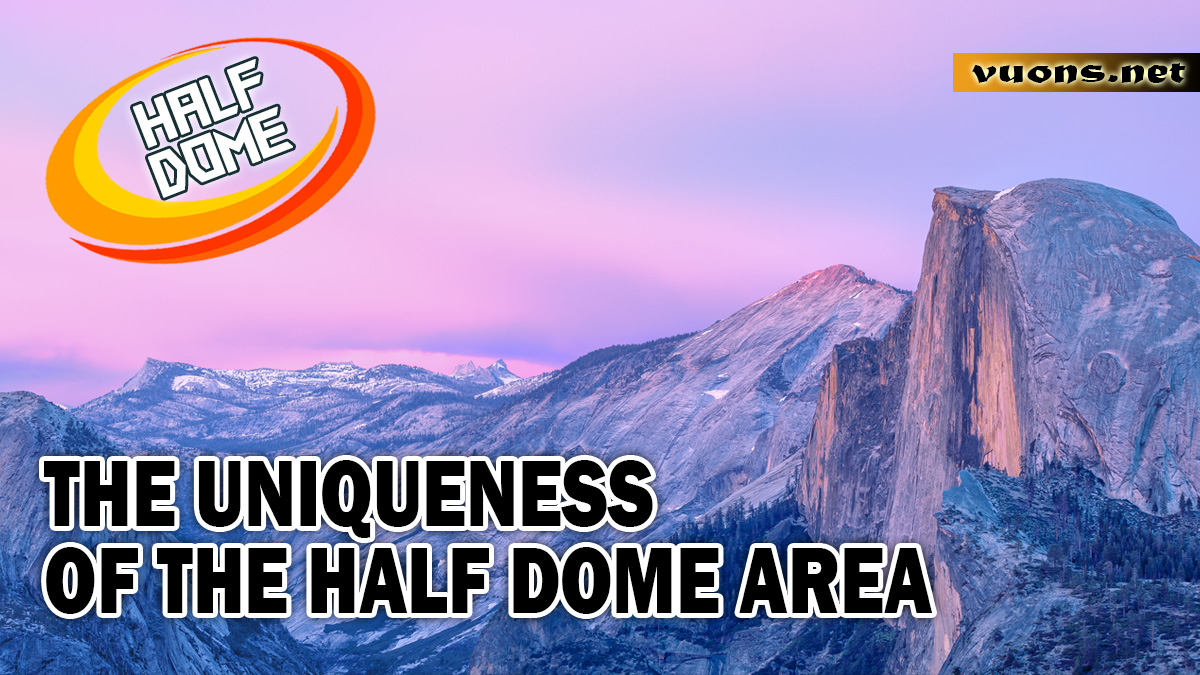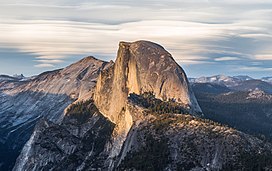The History and Beauty of America’s Half Dome
Origin of the Name and Geological Formation of Half Dome
Half Dome, one of Yosemite National Park’s most famous natural icons, has a rich history and fascinating geological formations. The origin of the name and geological formation of Half Dome is interesting to explore because it reflects extraordinary natural processes and a deep cultural heritage.
The name “Half Dome” was given because its shape resembles a half ball. Its steep and slippery eastern side looks like a dome split in two. This gives the impression as if half of the giant granite dome has been cut with a sharp knife. This name was first used by Lafayette Bunnell, a doctor and explorer who was one of the first people from Europe to explore Yosemite in the 19th century.
The geological formation of Half Dome began about 93 million years ago, when magma from deep within the earth rose to the surface and cooled, forming granite. Over millions of years, tectonic activity and natural erosion shaped the Yosemite landscape we know today. Weathering processes, especially by glaciers during the ice ages, smooth and sculpt this granite into unique shapes.
One of Half Dome’s prominent geological features is its steep, smooth “face,” the result of a combination of chemical weathering and physical erosion. Glacier erosion cut and smoothed the granite surface, leaving a nearly vertical face on the eastern side. Meanwhile, the western side of Half Dome has gentler slopes and is interwoven with a climbing trail known as the “Cable Route,” allowing climbers to reach the summit.
The origin of the name and geological formation of Half Dome reflect the natural wonder and long history of this place. Every element of this formation tells the story of the natural forces that shaped our world, and continues to inspire the millions of visitors who come to witness this extraordinary beauty.
Half Dome in Native American Culture
Before becoming a popular climbing destination, Half Dome was known as a sacred place revered by the indigenous tribes living in the area.
For the Ahwahneechee tribe, Half Dome is not just a majestic rock formation, but also an important part of their spiritual heritage. They call it “Tis-sa-ack,” which in local legend is the name of a woman who was turned to stone. According to the story, Tis-sa-ack and her husband had a heated argument, and their anger led to the formation of Yosemite Valley as well as Half Dome. The Tis-sa-ack, in the shape of a hemisphere, is believed to be a representation of the woman’s face facing the valley.
Half Dome also serves as a geographic marker and symbol of the power of nature in the oral stories of the Ahwahneechee tribe. They used this formation as a reference in traditional navigation knowledge and seasonal calendars. Stories about Tis-sa-ack teach the importance of harmony with nature and are an integral part of their cultural identity.
Besides the Ahwahneechee, other tribes such as the Miwok and Paiute also revere Half Dome. They often visit this site to perform religious rituals and ceremonies, asking for blessings and protection from the ancestral spirits who are believed to live there. This rock formation is considered a link between the physical and spiritual worlds, a place where humans can communicate with higher powers.
In Native American culture, Half Dome is seen not only as a geological wonder, but also as a sacred and meaningful site. The existence of Half Dome in their culture reminds us of the deep connection between humans and nature and the importance of preserving this rich cultural and spiritual heritage.
Half Dome as an Inspiration for American Art and Literature
These towering granite formations in Yosemite National Park have captured the attention and imagination of many people, producing impressive works of art and literature.
Artists such as Ansel Adams, the iconic 20th century photographer, used Half Dome as the main subject in his famous works. Iconic black-and-white photography from the summit of Half Dome, with its dramatic contrast between granite rock and blue sky, captures the essence of America’s epic natural beauty. Adams’ work not only introduced the world to Half Dome, but also cemented its iconic image in American visual culture.
Apart from that, Half Dome is also a subject in famous American literature. Author John Muir, one of the early advocates of Yosemite National Park, often described the natural wonder of Half Dome in his writings that raised awareness of environmental protection. The beauty and power of Half Dome has influenced the plots and backgrounds of literary works from novels to poetry.
With Half Dome’s presence in American art and literature, the formation has become not only a majestic natural symbol but also an important cultural icon. Its influence extends far beyond Yosemite’s geographic boundaries, reflecting the universal appeal of its extraordinary natural beauty. An undeniable source of inspiration, Half Dome continues to fuel the imagination and appreciation of America’s natural beauty.
Half Dome as a Symbol of the American Wilderness
Half Dome is not only a majestic geological formation in Yosemite National Park, but also a powerful symbol of the beauty of America’s wilderness. Standing tall among stunning valleys and peaks, Half Dome has become an icon that embraces conservation values and pristine natural beauty.
As part of a national nature preserve, Half Dome represents a commitment to protecting biodiversity and a natural landscape unmatched in the United States. Since its founding as a park in 1890, protection of Half Dome and its surroundings has been a top priority in environmental conservation efforts.
Not only is it a symbol of nature protection, Half Dome also attracts millions of visitors every year who come to admire its amazing natural beauty. Climbing to its peak, especially via the famous cable route, is a personal achievement for many adventurers seeking a physical challenge and spiritual experience in the wilderness.
Additionally, Half Dome also plays an important role in American popular culture, appearing frequently in films, advertisements, and other media as a symbol of outdoor adventure and freedom. Its existence as a symbol of America’s wilderness has inspired generations of Americans to preserve and appreciate this extraordinary natural beauty.
With its profound presence and significance, Half Dome continues to strengthen its status as an iconic symbol of America’s wilderness and inspire curiosity and appreciation for the extraordinary beauty of nature throughout the world.




